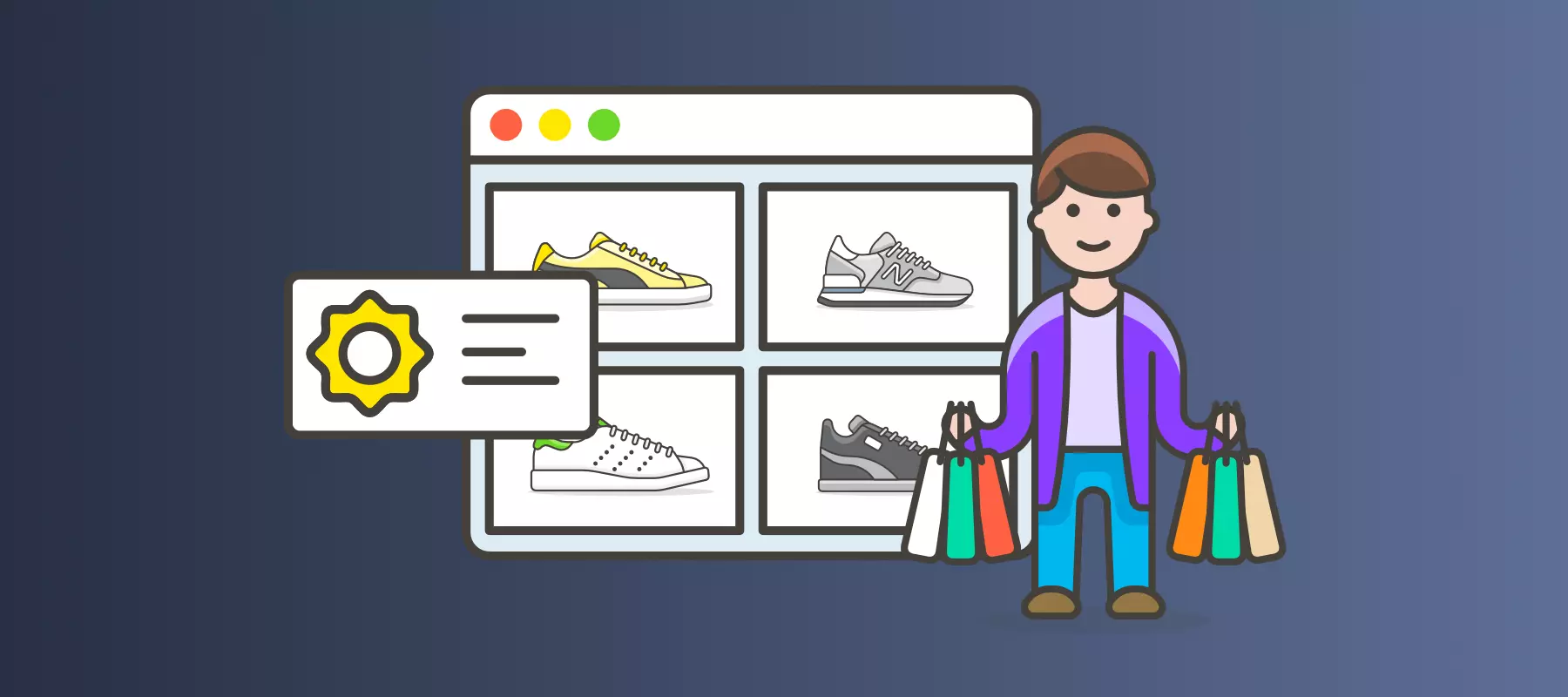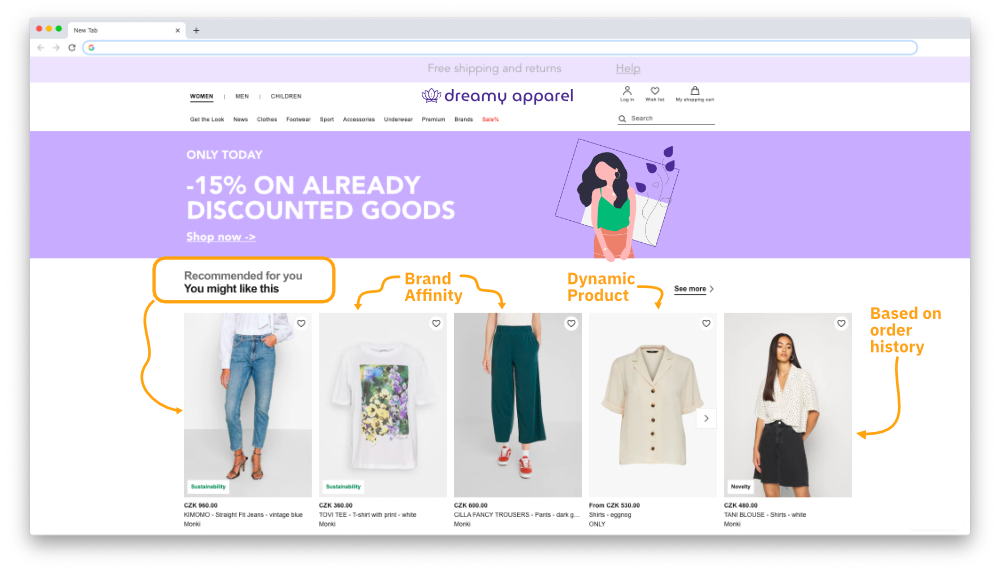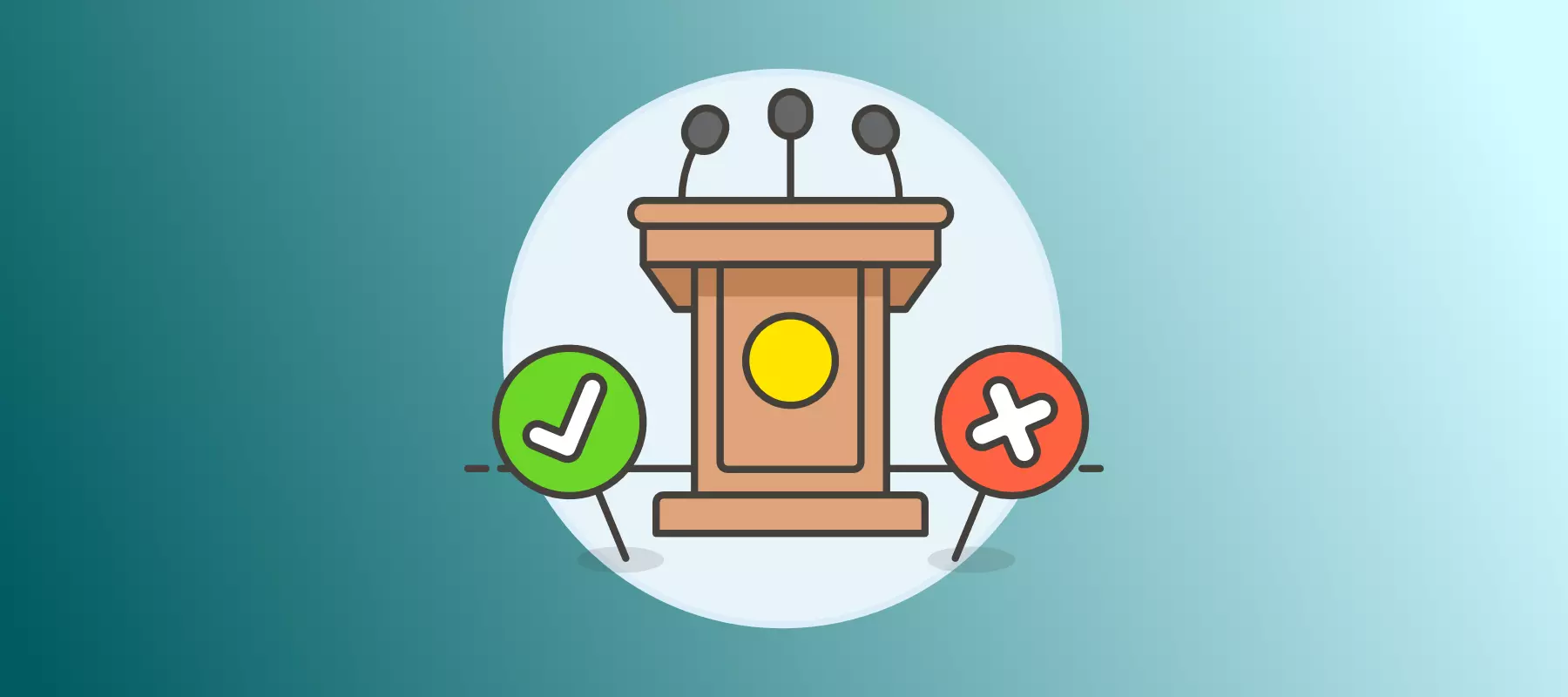Increase conversions with category page product ranking
Published: Nov 6th 2020 | 9 min read

Traditionally, e-commerce retailers and marketers pay most of their attention to developing product pages and checkout pages, because that is where the sales happen. However, we need to look at the previous steps, before the checkout. Customers use category pages to understand the offers of the e-shop, in other words, category pages become the attraction locations.
When a customer comes to an e-shop and looks for a product, category pages drive the majority of the site product discovery ranging between 50 - 70%, compared with other options, search results and recommendation sites bring around 10% each. This may seem like a lot and that there is not much to be improved. Nevertheless, the issue is in the progress from the category page. When the category page is not compelling enough, customers are unlikely to reach the individual product page. Less than half of that traffic really proceeds to the product page. Customers probably did not find what they were looking for, the products were not relevant or outside their price range. By optimizing category pages, you can double the product discovery and increase the profit. Additionally, it builds a website structure, improves SEO, and subsequent remarketing advertising.
Improving category pages
Driving targeted traffic to category pages has been a topic of many marketers’ discussion. Commonly they have already adopted some improvements. The “science” behind the sales-driving category pages lies in displaying the optimal combination of selected products, counting on the limited number of the showed pieces. Here are just two examples, how usually e-shops try to tackle category pages:
Manual optimization
The cooperation with many e-commerce businesses helped us understand that many e-shops are trying to optimize the category pages, however, they do it manually and rely on their own intuition rather than customer’s behavior. Manual arrangements can take days resulting in wasted resources; energy, time, and finances. The outcome of such activities costs more than they actually bring. Secondly, the changes cannot be applied fast enough to satisfy the customers’ needs.
Category Page Ads
Targeting traffic via ads is another option of how to increase conversion rates. If done correctly it can bring a significant increase. On the other hand, the actual return on the investment is lower, taking the ad spent into consideration.
How to optimize category pages & deliver better results
The optimization of category pages can be crucial in getting more website traffic, converting it to sales, and creating loyal customers from first-time shoppers. It is important to provide a valuable digital experience. When the category page doesn’t deliver what the customers expected, they leave without a purchase, not finding what they wanted. Relevancy is what matters. A crucial prerequisite to any calculation is historical data on products, sales, segments, etc. Without enough data, the results cannot be as satisfying.
Personalization and product recommendations
The category pages need to be personalized to be able to achieve different goals for different segments. Adding a layer of personalization to different audiences’ levels up simple segmentation and yields higher returns. With first-time customers, you will probably focus on conversion rate while with loyal customers you can highlight a particular brand based on brand affinity, new products to complement already purchased ones, or something a little more diverse, depending on the customer profile. Assigning different products to each segment, based on the customer’s behavior on-site increases customer engagement. Tracking how the customer acts on the websites helps to understand their needs and display relevant items. If two people are looking for backpacks, they might be looking for a different kind. If one person is shopping for notepads, writing supplies, it is likely they will also need a school backpack. A different customer is looking at hiking boots and camping gear and might need a hiking backpack.

Sorting
Sorting products on the site in specific order or sequence based on their attributes, performance metrics, and their combination. The attributes can be price, size, brand, availability, etc. Metrics can be, for example, conversion rate, margin, revenue per impression, or inventory information. Attributes and metrics rely on the data about the products and the customers, collected from the website and internal databases. By adjusting the weights of the values, it is possible to promote and demote products in the sequence causing the relocation of the product on the page.
Highlighting
Choosing to highlight specific products or groups of products, seasonal or campaign offers at the top of the category page supports marketing efforts. Placing some products on the most engaging and prominent spots on the sites creates a store-like experience. It is commonly used to promote new products, collaborations, and ranges. Highlighting can work for limited offers (discounts or weekend sales) and display products for a certain time period. Scheduling this should be aligned with marketing campaigns. Another option to adjust highlighting can be based on different business goals, chosen metrics, like profitability or liquidity.
Segmentation
Segmenting your customers should happen on top of sorting and highlighting products. It allows creating category pages with specific product sequences that vary among different audiences. The marketing approach differs by different types of customers, their preferences, affinity, and different shopping stages, therefore category pages should be aligned with that as well.
Personalization
Showing the customers what they want to buy, the right time, the right product – like a personal shopper. It helps customers to discover items they really want. In e-commerce, personalization has a more significant impact and is an important part of modern shopping. It provides relevant recommendations for the particular customer segment (or with advanced algorithms, even down to each individual customer). Personalization creates an experience based on the customer’s behavior.
Using Machine Learning for relevant product displaying
Powering product recommendation with Machine learning allows you to be dynamic and automatically adapt to the changes. What customers want to see is what they really need, ideally on the very first page. Long searching is demotivating. Using historic purchases, similar customer behavior, or other factors can significantly change the way your customers interact with your e-shop.
Product ranking based on customers behavior and other factors
Product ranking in a sense of algorithms is a process of product scoring based on what the customers like. Additionally, the score can be evaluated based on the factors the e-shop defines, for example, storage availability (the more pieces of each product you have and need to sell, the higher score it gets). What we have found as an effective method is to look more deeply and find the optimal combination of the products display next to each other. Our procedure usually consists of data integration from various systems, followed by advanced analytics and machine learning algorithms for continual improvement.
Testing and optimization
Finding an optimal solution isn’t an easy task, especially when personalization and merchandising are dynamic, evolving processes requiring repetition, calculation, and testing. AB Testing is a great approach for detecting the most profitable adjustments. It helps to discover the performance of different category pages or the effectiveness of product highlighting. It allows you to test competing strategies and make informed decisions for elevated results. It is possible to test a whole customer base or just a smaller part. With testing on different groups, you can experiment with bold ideas. You can see if sorting by high converting products is better than sorting by high-profit products. Or, you can assess if personalization delivers higher results than no personalization on category pages.
Continuous improvement
Once you set up the algorithms for relevant product displaying, you are not done yet. It is only a first step but not the last. Actually, the process is evolving, and you cannot stay static. Sometimes the results are oversimplified or too generalized, and you need to use more contextual data to improve the relevance. Thinking of it in the context of the customer journey helps to maintain the dynamics within the product associations.
What to think about before diving in
Are you hooked yet? Ready to dive your e-commerce business into the ocean of personalization? Slow down a little bit. There are a few things to think about before you do any action.
-
Make sure your website is ready!
Some technology can decrease performance. Even if the personalization is great, it should not be implemented if the usability is diminished.
-
**Don’t change the entire website!
**Structural elements cannot be personalized, they should remain the same (cart, navigation panel, etc.) -
Less is more!
Too much of everything is confusing, too dynamic can be misleading. The key is not to look at personalization.
-
Prepare your data!
Before you start the analyses and evaluations, gather all relevant data, the more historic data the better.
-
Identify key factors!
Figure out, how you want to score/rank/recommend the content. Do you need to clear your warehouse or promote more trendy items? What about seasonal stuff? Segmented or more individualized? More factors and segments, the more complicated and expensive it gets.
-
Start small!
Try only a few changes first, test them, and then you can see if it is worth it to advance or not.
Summary
Successful category pages drive performance and contribute to growing conversion and return ratios. Optimizing them generates a competitive advantage and brings multiple benefits to your e-commerce business and customers.
- Resource savings with automatization
- Better performance with category pages optimization
- Relevant experiences with personalization
- Achieving more than one target with optimization and testing
- Easy to scale with a growing product portfolio
It may seem super easy, just to set up a few rules and you are good to go. However, working with a large amount of data and continuous training of the algorithms is tricky. Rather than DIY everything, cooperating with more experienced professionals prevents the risk of “breaking it all” and losing your customers to it.
We have effectively set up the product ranking and relevant recommendations on category pages for many of our clients and helped them to achieve a 15-27% increase in the conversion only a few weeks after implementing the solution. We have been able to customize the solution based on different business needs and continuously improve the solution thanks to testing.


